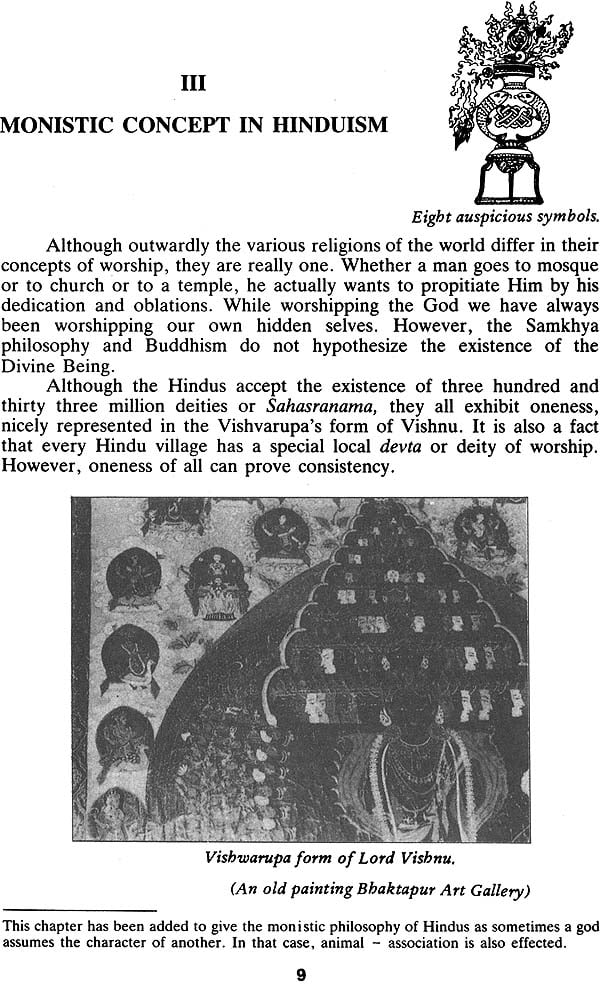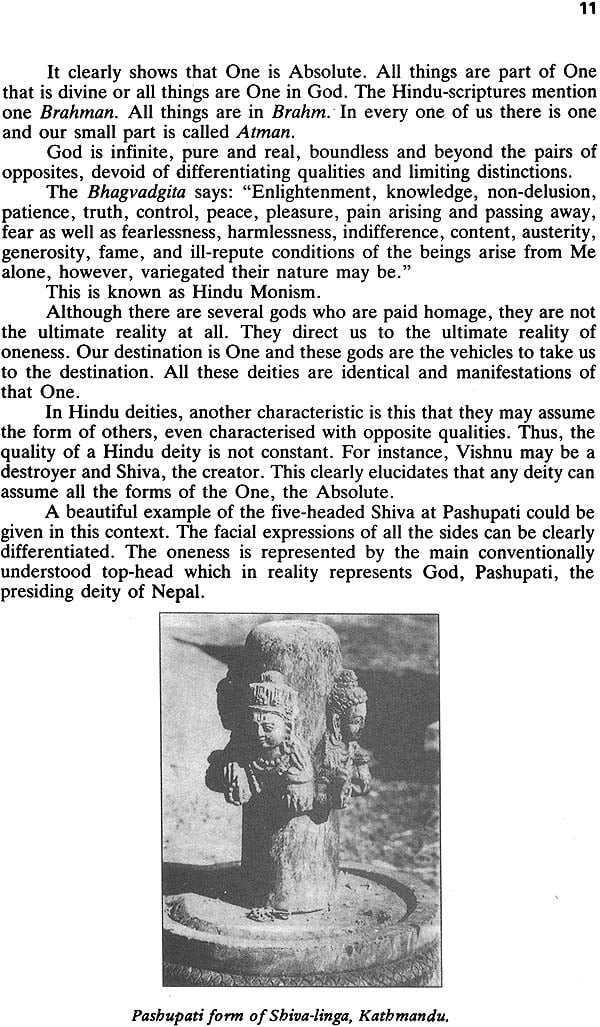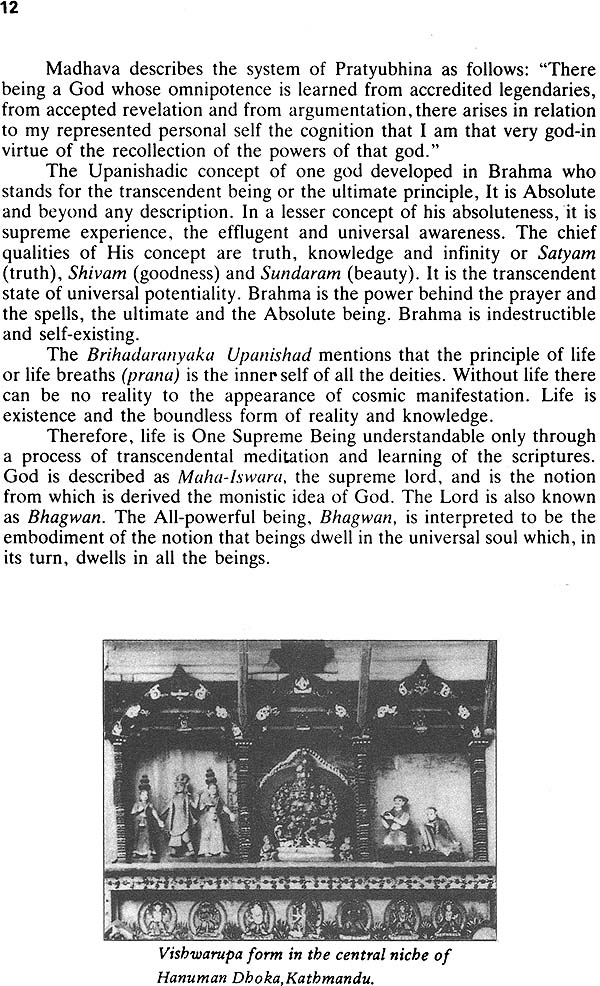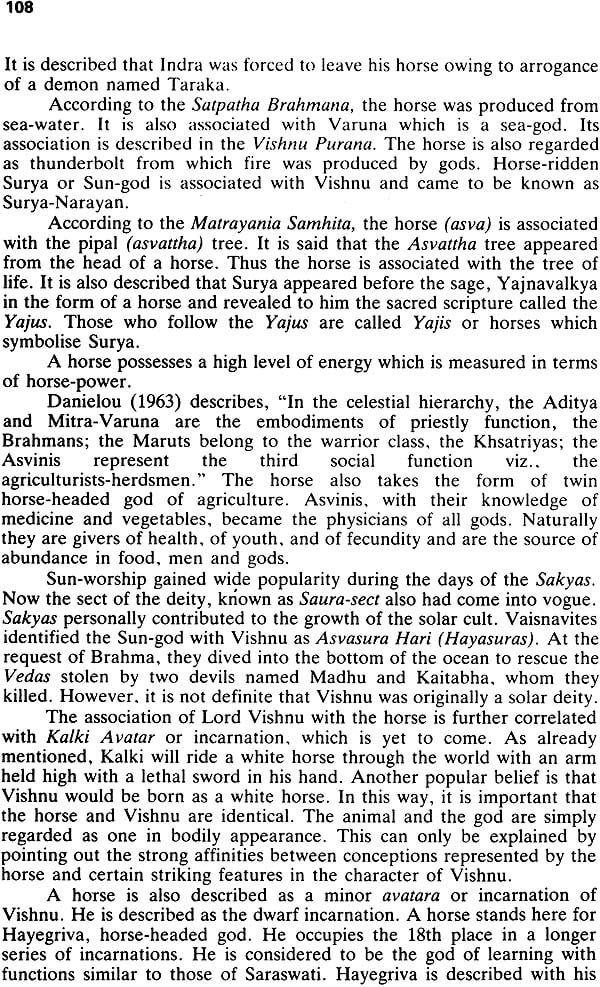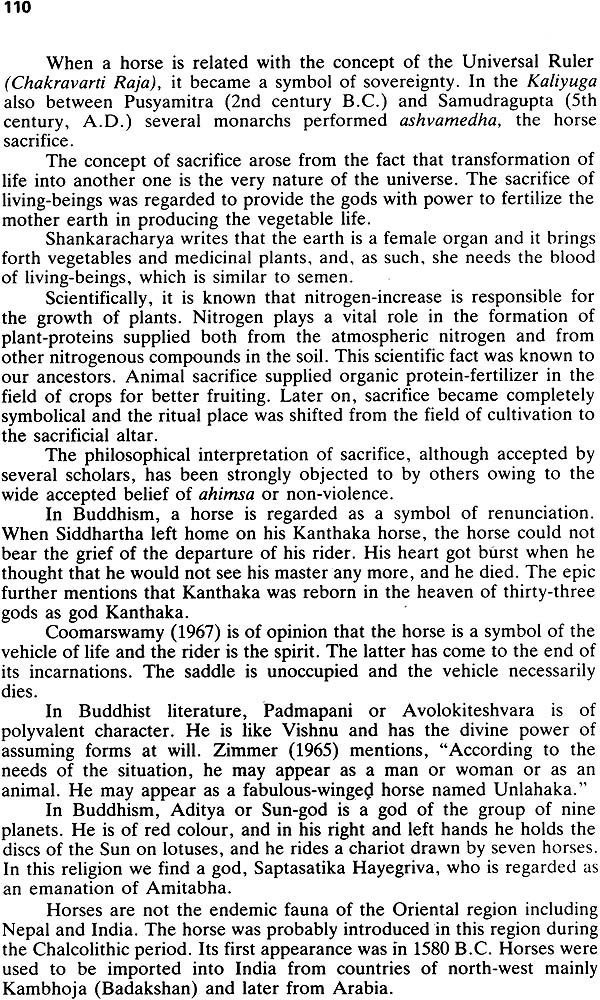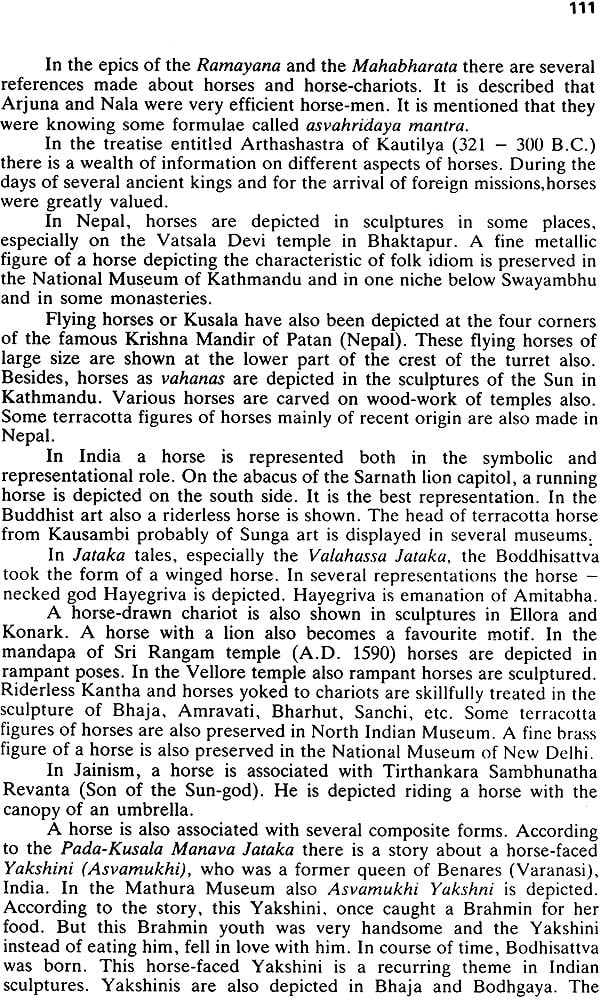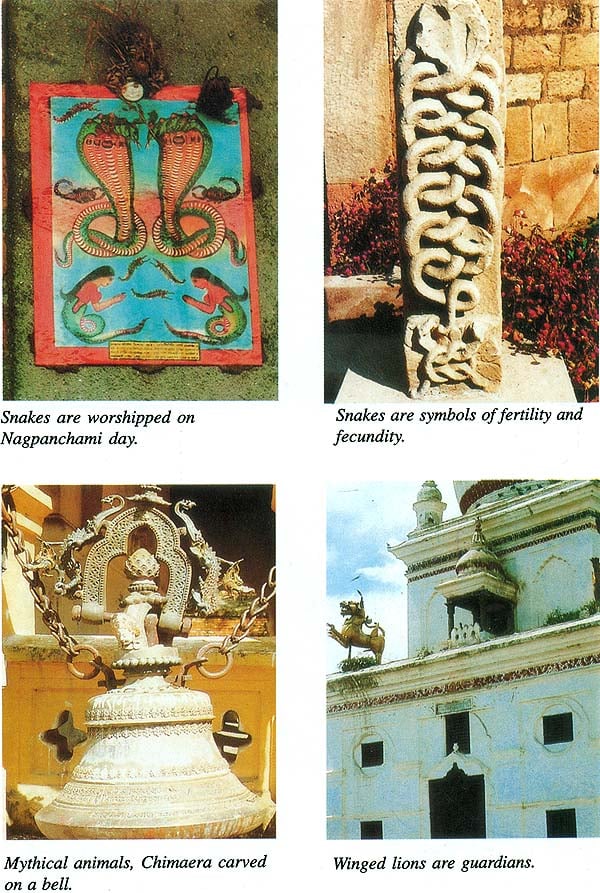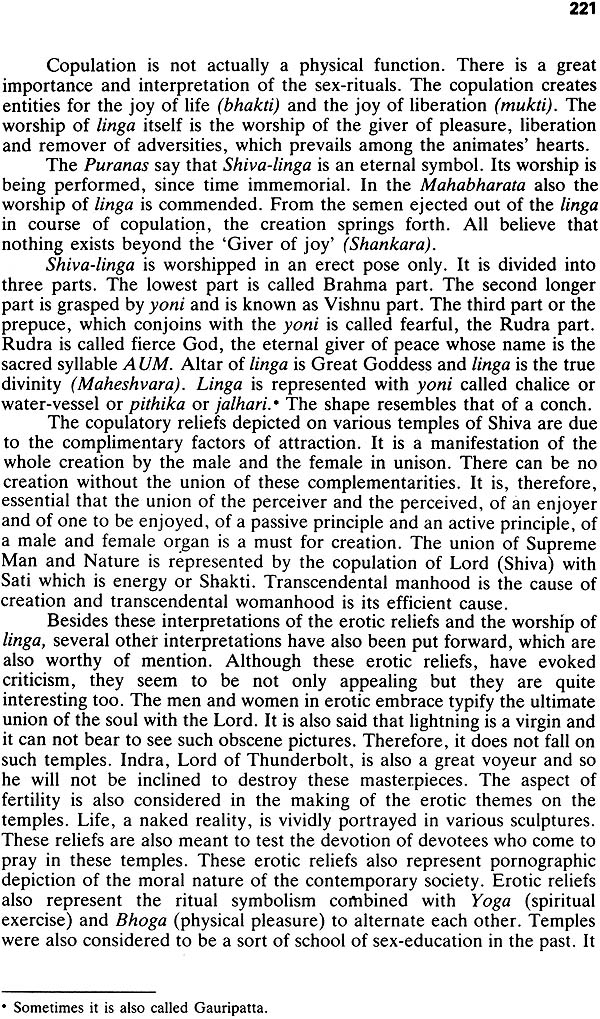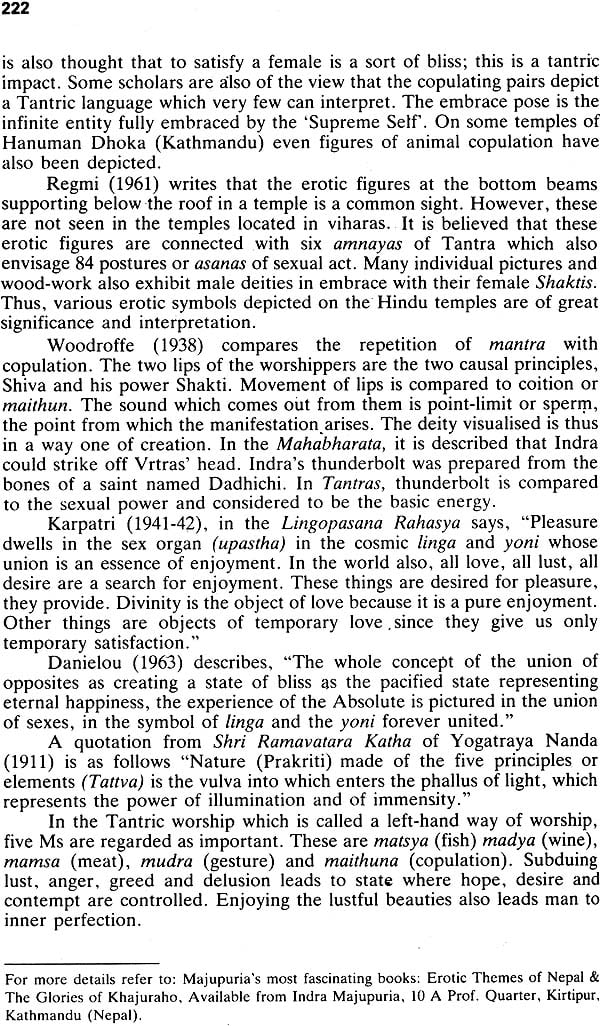
Sacred Animals of Nepal and India (With Reference to Gods and Goddesses of Hinduism and Buddhism)
Book Specification
| Item Code: | NAM611 |
| Author: | Trilok Chandra |
| Publisher: | Majupuria |
| Language: | English |
| Edition: | 2000 |
| ISBN: | 9747315238 |
| Pages: | 248 (Throughout Color and B/W Illustrations) |
| Cover: | Paperback |
| Other Details | 8.5 inch x 5.5 inch |
| Weight | 350 gm |
Book Description
TRILOK CHANDRA MAJUPURIA M.Sc., Ph.D., D.Sc. is Professor at Tribhuvao University, Kirtipur, Kathmandu (Nepal). He has been teaching for 48 years and has also been guiding Ph.D. and D.Sc. students for the last several years. He has written several books on Nepal the notable ones being: Sacred and Useful Plants and Trees of Nepal, Nepal: The Land of Festivals, Marriage Customs of Nepal, Youth of Nepal, Glimpses of Nepal, Peerless Nepal, Pashupatinath, Complete Guide to Nepal etc. Two most scholarly books he has authored and edited on natural history of Nepal are: Wild is Beautiful, Introduction to wild life and fauna of Nepal. The other book is Nepal - Nature's Paradise, which gives an insight into diverse facets of the country's topography, flora and ecology. Recently, he has edited some scholarly and informative books: Wildlife Wealth of India. Butterflies of Nepal, Magnificent Nepal Himalaya. He has got a wide interest in various fields. His interest in culture was sparked off by the original studies he carried out on the sacred and symbolic animals of Hinduism and Buddhism for about 38 years. He has been on a lecture tour to several universities, speaking on natural and cultural ecology of Nepal together with other zoological topics. His interest in the field of socio-biology is deep. He has also participated in various international seminars and has visited several countries viz., Lebanon, Italy, France, Germany, U.K., U.S.A., Thailand, Hongkong, Japan, Canada, Switzerland, India, Bangladesh, Burma, Malaysia, Philippines, Singapore, Austria, Greece, United Arab Emirates, China, etc. He has got to his credit about 100 papers, 500 articles and 11 books on zoology. He is fellow of several international associations.
Life originated in 'this Universe more than two thousand million years ago while man appeared on this planet probably only two million years ago. Man appeared and evolved in the company of animals. Therefore, for his existence he depended on animals so that his culture and thought-patterns are largely centred on animals. Man's mental horizon was filled with the multifarious manifestations of animal life.
Man has recognised his kinship with animals since he became aware of himself. Only the growth of civilization has distinguished man from animal. The primitive man identified animals with himself. He considered the difference only in shape and not in nature and behaviour. Many animals are known for their keenness of sense and wisdom. Therefore, man mimed them in his various activities, admired, loved, feared and also worshipped them, both dead and alive. Animals are also regarded as reincarnated ancestors or messengers of gods and some even as gods themselves. They are considered to be the recipients of worship and objects of cults. Animals were regarded as cultural heroes, tutelary forms and field-spirits. Ancestors of animals are known in etiological and totemic myths, legends and religion. Animal tales were framed with animals as principal characters. Animals are regarded as sacred beings and are grouped into two categories: (1) those associated with divinities as attributes and (2) those who have sacredness about 'them.
The animals have very closely been associated with the life, culture and religion of the Hindus and Buddhists through the ages. These animals are depicted in ancient literature and art-traditions of both these religions, and are carved especially on wood-work and metal-work in temples and monasteries, The cultural forces introduced and nurtured in Nepal and India, have left a rich legacy of culture which is the blend of both these religions. This cultural pattern is reflected in social, cultural, religious and artistic fields.
Animals and their structures have not only been associated simply for decorative pattern but also have a wide acknowledged religious impact. Many speculations and interpretations have been put forward about the symbolic significance of animal-motifs. It is definite that these animals had some religious importance. It is also definite that the representation is purposeful rather than purely decorative. The symbolic animals, represented in various art-forms, display a high standard of technical skill and craftsmanship. There is a great relationship of animals with man's life and his economy. Ancient human beings spent their lives in the lap of Nature. Therefore, Nature including animals exerted a big impact on them. Among the symbolic animals, the most remarkable feature to be observed is the combination of the contradictory elements so as to exhibit diverse provinces of life into contact with one another by crossing, blending and weaving them together. Neumann (1955) exemplified this fact by selecting the symbol of elephant and he pointed out that the diverse notions cross and blend to impart importance to them in a complex manner. The selection of symbols is sometimes made to represent the partial theme in art, which sometimes depends on the taste and knowledge of the artists and its relevancy to the subject-matter.
In depicting animals, religio-mythical themes play a significant role. Some authors are of opinion that these animals are guardians also. The theory of the vehicle or vahana is most widely approved in religions. For instance, the elephant is regarded as the vahana of Indra, whereas the bull, the vehicle of Lord Shiva.
The animal composition has also been affected by various legends and stories. Current plastic trends have also played a great role in animal-representations. It also depended on the cognitive faculties or aesthetic sense of a genius or a group of talented persons concerned to represent these animals in symbolic forms.
Animal symbols, depicted in arts are mainly based on some religious notions. This shows aesthetic qualities of representations in animals indicating the subjective value of the aesthetic aspect. Animals were taken by some gods as their partners also. As in the gods, the supernatural and transpersonal powers were attributed to the animals also in the socio-religious life of human beings. The animal symbols were associated with both male and female gods. Two-fold divisions among animal symbols were synchronised with male and female gods.
However, in the winged-animals no such sharp line of differentiation between male and female principles is formed. Many composite figures were also modelled either through optic illusion or by both conscious and unconscious efforts of artists to blend different elements in a single subject. An excellent example of makara can be cited in this respect, which is a combination of two different types of animal-symbol. It stands both for amorosity and continuous cohabitation. Several animals were depicted due to their reference to outstanding myths and legends. The theory of creation and evolution was also responsible for the development of animal-compo site-figures.
It is not only the thinking of a group of people or of a race but also the geographical conditions that have contributed to the peculiarity of the human thought. This can be explained with the examples of snakes and elephants. The snake is regarded as a symbol of fertility but its symbolic explanation is attributed to the elephant due to the confusion of the word Naga which means both a snake and an elephant. Indra took the elephant as his vehicle when he changed his character from the war-god to the god of rain. The elephant was regarded as the sign of fecundity when Maya betook the six-tusked white elephant for the conception of Lord Buddha. Later on, the elephant was considered to be a carrier. In the later period, the worship of an elephant was absorbed within its fold and the worship of Ganesvaras or Vinayakas appeared in the anthropomorphic form of Ganesha.
The animal-motifs, although conventional, were responsible for moulding some ascetic religions also. The animal depiction also indicates that these animals were once found in these regions. Thus they were not derived from the hear-say tradition and memory alone but were based on keen analytical observations.
These animals whose symbols are depicted on the walls of temples and monasteries or are evident from the visual art were considered to be of good omen. They are benevolent and they have protective influences also.
Some of these animals have been of prime importance in the economy and this also made them responsible for their exhibition in the art towards perfection.
These animal-motifs are, thus, lively, varied, real and imaginary. However, the exact or even approximate meanings of their symbolism are only in the realm of conjecture.
Some symbols are composite as it has been known that the tendency of ancient people was to assume that a single object had complex characters whether it was a living or non-living objects. This also led to the belief that some animals, trees or some inanimate objects are shown in human forms. It was also believed that their anthropomorphic forms were capable of changing into original forms. Composite characters of persons or things were responsible for hybrid representations of animate and inanimate forms.
To Gonda (1969), what is worthy of special consideration is that animals were widely believed to have the power to sustain, for example, the potency of vegetation, to have mysterious relations or to be a sort of reservoir of power for socio-religious community. These animals are, therefore, representatives of the gods whom they have accompanied. Some animals are, especially, divine or apt to be worshipped and deemed to have special potentialities, and others are of a secondary importance. Symbols are regarded as the pictorial script of changeless wisdom.
In case of Babylonia, the local god was originally theomorphic, and, when he assumed an anthropomorphic shape, there was no room for the primitive animal-forms except to become the vehicle or vahana or mount of deity. Thus it can be interpreted that God assumed these successive forms to save mankind from the agony of evil forces.
In Hindu and Buddhist mythologies, the deity is described in association with various symbols. Every god has a definite consort, offspring, sacred sites, names and titles, modes of manifestation or avatara, auspicious bodily marks, weapons, colours, numbers, flowers, dress, jewels, ornaments, mandalas or magical designs. mantras or magical sounds, companions, and vehicles or vahanas or animal mounts. Out of these, our main consideration is of the impact of animal-vehicles or association of the animals with the deities.
Danielou (1963) writes, " ... true symbolism is far from being invented by man, it springs from Nature herself."
Animal-symbolism also developed owing to great information available to the ancient people. Since ancient times, animals have been domesticated also. Such animals are: cow, sheep, elephant, camel, pig, duck, peacock and horse. Semi-domesticated animals are cat, dog, mongoose, various birds and insects. Some vertebrates including tortoises and fish are used as food. Molluscan shells are used in ornamentation. Horns of some mammals are used for medicinal purposes. All these have left a legacy for animal-symbolism.
Respect to the animals is also due to the Hindu belief that they are regarded as abodes of the soul of the dead and even of living inmates. Animals are also honoured as man depends on them for subsistence. Sometimes, the animal-motifs are represented as animals are considered to be mainly of material benefits. Animals have been the object of worship and adoration; sometimes for the benefits they confer on their worshippers, sometimes for the fear the people have of the consequences of refusing respect to them, sometimes for the assistance they derive from the animals, sometimes for the wrath of God and sometimes because they help them as domestic animals. Omens are also drawn from the cries of birds and mammals.
Very aptly, Walker (1968) writes, "Belief in the notion of microcosm, in the relationship between things, in the doctrines of signature, all lend strength and variety to Hindu-symbolism."
The treasures of symbols are immense. Their elequent details are so abundant that they are to be edited, translated and interpreted. Zimmer (1956) describes, "It is by no means an infrequent experience to come across tales hitherto unnoticed or unknown, images undeciphered, expressive features not yet understood, aesthetic and philosophical values 'yet uninterpreted."
| I. | Why This Book? | 1 |
| II. | Introduction | 4 |
| III. | Monistic concept in Hinduism | 9 |
| IV. | The Hindu Pantheon | 13 |
| V. | Some Unique Gods and Goddesses of Nepal | 16 |
| VI. | Gods and Goddesses: | |
| Vedic Gods | 19 | |
| Pauranic Gods and Goddesses | 26 | |
| Major Hindu Deities | 26 | |
| Major Buddhist Deities | 47 | |
| Hybrid and Tantric Deities | 60 | |
| VII. | The Hindu Theory of Incarnations | 65 |
| VIII. | Sacred Animals in Hinduism & Buddhism: | |
| Prehistoric animals | 75 | |
| The Cow | 79 | |
| The Bull | 87 | |
| The Elephant | 96 | |
| The Horse | 107 | |
| The Lion | 114 | |
| Garuda | 119 | |
| The Boar/Pig | 0 | |
| The Bear | 130 | |
| The Monkey | 132 | |
| The Antelope/Nilgai | 0 | |
| The Deer | 137 | |
| The Wolf/Jackal | 140 | |
| The Hare | 141 | |
| The Rhinoceros | 142 | |
| The Buffalo | 143 | |
| The Yak | 145 | |
| The Ass!Donkey | 146 | |
| The Goat | 147 | |
| The Ram or Mountain Sheep | 149 | |
| The Cat | 150 | |
| The Dog | 151 | |
| The Porcupine | 154 | |
| The Mongoose | 155 | |
| The Rat | 156 | |
| The Peacock | 159 | |
| The Dove | 164 | |
| The Parrot | 165 | |
| The Owl | 166 | |
| The Crow | 170 | |
| The Vulture | 171 | |
| The Eagle | 173 | |
| The Cuckoo | 174 | |
| The Crane | 175 | |
| The Cock | 177 | |
| The Swan (Hamsa) | 178 | |
| Other birds | 181 | |
| The Snake (Naga) | 182 | |
| The Tortoise | 192 | |
| The Crocodile | 194 | |
| The Frog | 195 | |
| The Fish | 196 | |
| The Conch Shell | 197 | |
| The Ant | 199 | |
| The Crab | 200 | |
| The Bee | 201 | |
| The Scorpion | 202 | |
| The Spider | 204 | |
| IX. | Mythical Forms: | |
| The Chimaera | 205 | |
| The Dragon | 206 | |
| Makara | 208 | |
| Kirtimukha (Face of Glory) | 211 | |
| Vyala or Leograph | 214 | |
| Kinnara, Kinnari and Kimpurusha | 216 | |
| The Yeti, The Abominable Snowman | 217 | |
| X | Symbolic Forms: | |
| Copulating Pairs | 220 | |
| Corpse | 223 | |
| Human Skulls | 225 | |
| XI | Plea for Animal Conservation | 227 |
| XII | Select References | 232 |
| XIII | Index | 239 |
| The Author | 242 |
